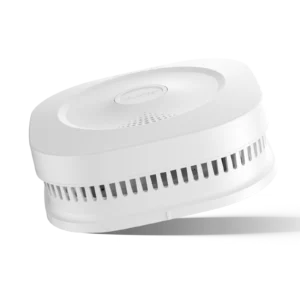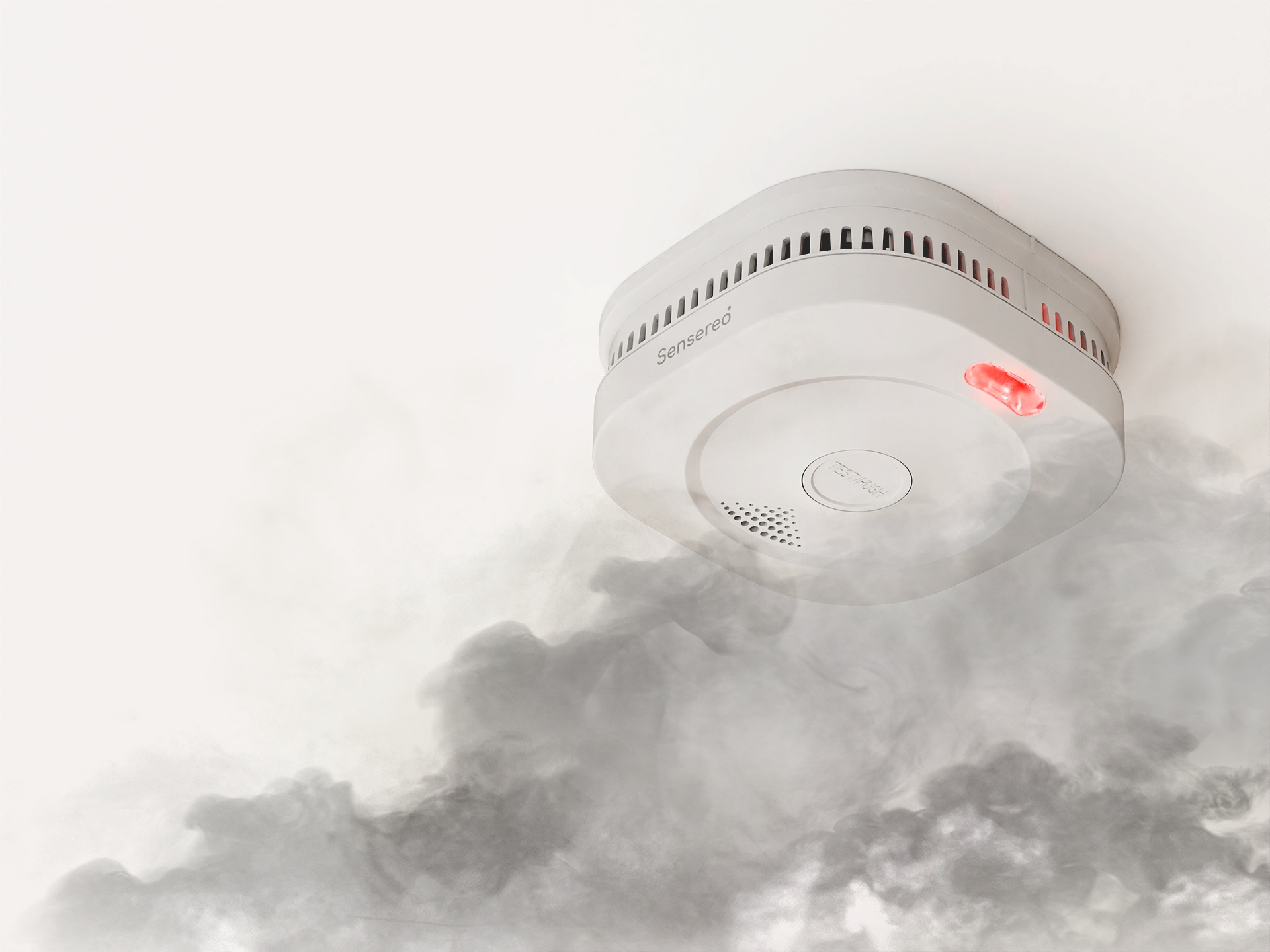In an era where smart home automation is rapidly evolving, the humble smoke detector has transformed into a sophisticated safety device. While traditional smoke detectors offer essential auditory alerts, smart smoke detectors go a significant step further, integrating with your smart home ecosystem to provide advanced features like remote notifications, interconnected alarms, and even self-testing capabilities. This article delves into the nuances of smart smoke detector performance, moving beyond the basic alert to explore critical aspects such as response time, battery life, and overall reliability. We will compare various models and technologies, including innovations like the “matter smoke detector” and “matter over thread devices”, to help homeowners, tech-savvy consumers, and safety-conscious families make informed purchasing decisions. Understanding these advanced features is crucial for securing peace of mind and ensuring comprehensive protection for your property and loved ones. Whether you’re upgrading from basic detectors or seeking the cutting edge in fire safety, this guide provides the insights needed to select the best smart smoke detector that truly enhances your home safety strategy.
The Evolution of Smoke Detection: From Basic Alerts to Smart Connectivity
The history of smoke detection technology has seen remarkable strides, transitioning from rudimentary standalone alarms to complex, interconnected smart devices. Initially, smoke detectors served a singular, vital purpose: to emit a loud alarm upon detecting smoke, providing occupants with a precious few moments to evacuate. These devices, while fundamental to fire safety, operated in isolation, offering no communication beyond their immediate vicinity.
Today, the landscape has dramatically shifted. Modern smart smoke detectors are integral components of a larger smart home ecosystem, offering capabilities far exceeding their predecessors. This evolution underscores a critical shift for homeowners and those embracing smart home automation: the necessity to look beyond mere auditory alerts. Advanced features like remote monitoring, system integration, and proactive diagnostics are now paramount, setting the stage for a deeper exploration into critical performance features that define contemporary fire safety.
Key Performance Metrics: Beyond the Beep for Smart Smoke Detectors
Differentiating smart smoke detectors requires a meticulous examination of their core performance indicators.
1. Understanding Response Time
One of the most critical aspects of smart smoke detector performance is response time. How quickly the device detects an anomaly and initiates an alert. Rapid detection is paramount, as every second can be crucial in a fire emergency. The faster a detector signals the presence of smoke or fire, the more time occupants have to evacuate safely and for emergency services to be notified.
2. Photoelectric vs. Ionization Sensors
Sensor types also play a significant role in a smoke detector’s efficacy. Most smart detectors utilize either photoelectric or ionization sensors, or a combination of both. Photoelectric sensors excel at detecting slow-smoldering fires, which produce large, visible smoke particles, while ionization sensors are typically more responsive to fast, flaming fires that generate invisible combustion products. Hybrid detectors aim to provide comprehensive protection against both types of fires, offering a superior smoke detector reliability comparison against various fire types and enhancing overall advanced fire protection.
| Feature | Photoelectric Sensor | Ionization Sensor |
| Detection Method | Uses a light beam and sensor; detects smoke by light scattering or obscuration | Uses a small radioactive source to ionize air; detects smoke by disruption of electrical current |
| Best Suited Fire Type | Smoldering, slow-burning fires (e.g., burning upholstery, electronics, plastics) | Fast-flaming fires (e.g., burning paper, grease, wood) |
| Response Speed | Faster for smoldering fires, relatively slower for flaming fires | Very fast for flaming fires, slower for smoldering fires |
| Sensitivity to Smoke Particles | More sensitive to larger smoke particles | More sensitive to smaller, invisible combustion particles |
| False Alarm Resistance | Less prone to false alarms from cooking or steam | More prone to false alarms from steam, dust, or aerosols |
| Environmental Interference | Less affected by dust, humidity, or insects | Can be affected by environmental factors and contaminants |
| Typical Applications | Living rooms, bedrooms, areas prone to smoldering fires | Kitchens, areas with risk of fast-flaming fires |
| Combination (Hybrid) Models | Available; provide comprehensive protection against both fire types | Available; provide comprehensive protection against both fire types |
Key Takeaways
Photoelectric detectors are ideal for detecting slow, smoldering fires and are less likely to trigger nuisance alarms.
Ionization detectors are highly responsive to fast-flaming fires but may be more susceptible to false alarms from non-fire particles.
Hybrid detectors combine both technologies for optimal coverage in various fire scenarios.
3. Reducing False Alarms
Furthermore, advanced models incorporate technologies aimed at reducing false alarms, a common frustration with older units. Features like advanced algorithms that differentiate cooking smoke from actual fire threats, or sensitivity adjustments, significantly enhance reliability. These innovations ensure that homeowners receive timely, accurate alerts, minimizing unnecessary evacuations and fostering greater trust in their safety systems.
In Summary:
Key performance metrics for smart smoke detectors include response time, sensor type, and false alarm reduction. Fast detection is crucial for occupant safety. Photoelectric sensors are effective for slow-smoldering fires, ionization sensors respond better to fast-flaming fires, and hybrid sensors offer comprehensive protection. Advanced technologies using algorithms and sensitivity adjustments significantly reduce false alarms, enhancing reliability and user trust.
Understanding Battery Life and Power Management in Smart Smoke Detectors
Power source is a key factor affecting a smart smoke detector’s reliability and maintenance needs.
1.Battery Types and Lifespan
Alkaline batteries: Typically require replacement about once a year. Frequent replacements can be overlooked, posing safety risks.
Lithium-ion batteries: Designed for long life, often lasting up to 10 years, matching the detector’s recommended replacement cycle and reducing maintenance efforts.
2.Wired Detectors
Connected directly to the home’s electrical system for continuous power.
Usually include a battery backup to maintain operation during power outages.
3.Impact of Smart Features on Power
Features like Wi-Fi connectivity, constant sensor monitoring, and self-testing increase power consumption.
Devices that frequently communicate or provide real-time updates may drain batteries faster.
Key Takeaway
Balancing advanced smart functions with efficient power management is essential for ensuring uninterrupted fire safety and making informed purchasing decisions.
Interoperability and Ecosystems: Matter Smoke Detector and Matter over Thread Devices
Seamless integration with your existing smart home ecosystem is a defining characteristic of advanced fire safety, and innovations like the “matter smoke detector”and “matter over thread devices” are revolutionizing this landscape. Matter, a new open-source connectivity standard, is designed to enhance compatibility across various smart home platforms, including Apple HomeKit, Google Home, and Amazon Alexa. This interoperability means that a Matter-certified smoke detector can effortlessly communicate and interact with other Matter-enabled devices, regardless of their manufacturer or preferred smart home ecosystem.
Thread, a low-power, self-healing mesh networking protocol, complements Matter by providing a robust and efficient communication layer for smart home devices. Matter over Thread devices offer superior reliability and faster response times compared to Wi-Fi based connections, while consuming less power. This combination ensures that critical alerts are delivered promptly and consistently throughout your smart home, reinforcing the overall smart smoke detector performance.
The benefit of this cross-platform compatibility is immense for tech-savvy consumers and homeowners seeking a unified smart home experience. It eliminates the previous fragmentation where devices from different brands struggled to work together, offering enhanced choice and flexibility in building a truly interconnected and secure home safety system.

Advanced Features and User Experience: What Modern Smart Smoke Detectors Offer
Modern smart smoke detectors offer more than just basic fire detection. They include several advanced features that improve safety and convenience:
- Remote Notifications: Receive alerts on your smartphone anytime, anywhere. This helps you respond quickly, even when you’re away from home.
- Voice Alerts: Clear, audible messages specify the type and location of danger, guiding occupants during emergencies.
- Interconnected Alarms: When one detector senses danger, all alarms in the home sound simultaneously, providing early warning throughout the property.
- Self-Testing: Devices automatically check sensors, batteries, and connectivity, then report status via an app eliminating the need for manual tests.
- User-Friendly Apps: Companion apps offer intuitive interfaces to monitor device status, view history logs, and customize settings easily.
Top Contenders: A Reliability-Focused Comparison of Best Smart Smoke Detectors
When selecting the best smart smoke detector, focusing on real-world reliability and response time is paramount. Leading brands have distinguished themselves through consistent performance and robust features. For instance, the MS-1 is an excellent example of a high-quality smart home device, praised by users for its rapid detection capabilities and seamless integration with smart home ecosystems.
A smoke detector reliability comparison often reveals that devices with combined photoelectric and ionization sensors, along with advanced processing algorithms, consistently provide better performance against various fire types. For example, user reviews frequently highlight the virtually instantaneous reaction time of certain models to both fast-flaming and and slow-smoldering fires. “The MS-1 notified me of a potential issue before I even smelled anything,” noted one user, praising its rapid response time capabilities.
Here’s a comparison of top smart smoke detectors, focusing on features vital for safety and integration:
| Feature / Model | MS-1 (Battery) | Nest Protect (Wired/Battery) | First Alert Onelink Safe & Sound |
| Sensor Type | Photoelectric & Ionization | Split-Spectrum (Photoelectric & CO) | Photoelectric & Electrochemical (CO) |
| Power Source | Battery-powered (7-year built-in + replaceable CR123A for comms) | Hardwired with Battery Backup or Battery-only | Hardwired with Battery Backup |
| Smart Home Support | All Matter-compatible hubs (eg. Apple Home, Home Assistant, SmartThing) | Google Home, Alexa | HomeKit, Alexa, Google Home |
| Special Features | Voice alerts, Remote notifications, Self-testing | Voice alerts, Pathlight, Sound Check, CO detection | Voice alerts, CO detection, AirPlay 2 speaker |
| Response Time | Excellent | Very Good | Good |
| User Review Rating | 4.8 / 5 | 4.5 / 5 | 4.2 / 5 |
| False Alarms | Low | Low | Moderate |
Key Differences Summary
MS-1 stands out with its extended battery life, advanced wireless connectivity supporting Matter and Thread protocols, and comprehensive app functionality.

Nest Protect offers broad smart home compatibility and unique features like the Pathlight.
First Alert Onelink Safe & Sound integrates an AirPlay 2 speaker, making it especially appealing to users within the Apple ecosystem.
While specific models may excel in one area, the overall package of reliable detection, intelligent alerts, and ease of use defines the industry’s best. Consider products that consistently receive high marks for minimal false alarms and long-term durability, ensuring true peace of mind for safety-conscious families and tech-savvy consumers.
Making the Smart Choice: Factors to Consider for Your Home’s Safety
Choosing a smart smoke detector involves looking far beyond the basic audible alert. Key considerations include installation requirements, ensuring compatibility with your home’s infrastructure and any existing smart home systems. It’s also crucial to be aware of local building codes, as some jurisdictions may have specific requirements for smoke and CO detector placement and type.
Furthermore, astute buyers should investigate potential insurance implications. Many insurance providers offer discounts for homes equipped with advanced safety features, including interconnected smart smoke detectors that provide real-time alerts. This offers a compelling financial incentive, enhancing the overall value proposition of investing in advanced smart home safety technology.
Ultimately, the objective is to secure comprehensive protection for your property and loved ones. By prioritizing factors such as rapid smart smoke detector performance, extended battery life options for smart detectors, broad interoperability (especially with a matter smoke detector), and a robust approach to smoke detector reliability comparison, you can make an informed decision that truly elevates your home’s fire safety strategy. For more insights and smart home safety solutions, visit our official website at Sensereo.com.




